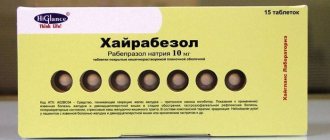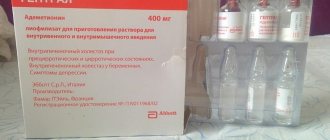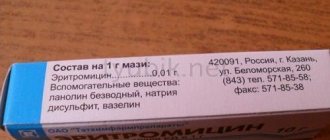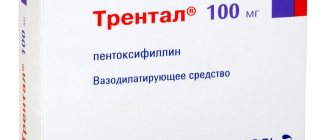Home | About us | Delivery | Advertisers | Login | Registration
- Medicines
- dietary supplementsVitamins
- Categories from A to Z
- Brands from A to Z
- Products from A to Z
- Medical equipment
- beauty
- Child
- Care
- Honey products appointments
- Herbs and herbal teas
- Medical nutrition
- Journey
- Making medicinesStock
Pharmacy online is the best pharmacy in Almaty, delivering medicines to Almaty. An online pharmacy or online pharmacy provides the following types of services: delivery of medicines, medicines to your home. Online pharmacy Almaty or online pharmacy Almaty delivers medicines to your home, as well as home delivery of medicines in Almaty.
my basket
Apteka84.kz is an online pharmacy that offers its customers medicines, medicinal and decorative cosmetics, dietary supplements, vitamins, baby food, intimate products for adults, medical equipment and thousands of other medical and cosmetic products at low prices. All data presented on the Apteka84.kz website is for informational purposes only and is not a substitute for professional medical care. Apteka84.kz strongly recommends that you carefully read the instructions for use contained in each package of medicines and other products. If you currently have any symptoms of the disease, you should seek help from a doctor. You should always tell your doctor or pharmacist about all the medicines you take. If you feel you need further help, please consult your local pharmacist or contact our GP online or by telephone.
© 2012 Pharmacy 84.
Thrombopol, 75 mg, enteric-coated tablets, 30 pcs.
Thrombopol is an NSAID, antiplatelet agent. The mechanism of action of acetylsalicylic acid is based on irreversible inhibition of COX-1, resulting in blockade of thromboxane A2 synthesis and suppression of platelet aggregation. The antiplatelet effect develops even after using the drug in small doses and persists for 7 days after a single dose. Thanks to these properties, acetylsalicylic acid is used for the prevention and treatment of myocardial infarction, ischemic heart disease, and complications of varicose veins. Acetylsalicylic acid also has anti-inflammatory, analgesic, and antipyretic effects.
Trombopol tablets have an enteric coating, due to which they dissolve and release the active substance in a more alkaline environment of the duodenum, reducing the irritating effect of acetylsalicylic acid on the gastric mucosa.
Pharmacokinetics Absorption
Absorption of acetylsalicylic acid from enteric-coated tablets begins 3-4 hours after taking the drug, confirming that the coating effectively blocks the dissolution of the drug in the stomach. Cmax in plasma is reached after approximately 2-3 hours and averages 12.7 mcg/ml for 150 mg tablets and 6.72 mcg/ml for 75 mg tablets. The presence of food in the gastrointestinal tract slows down the absorption of the drug.
AUC is 56.42 mcg×h/ml for 75 mg tablets and 108.08 mcg×h/ml for 150 mg tablets.
Distribution
Acetylsalicylic acid quickly and significantly penetrates most tissues and biological fluids of the body. The degree of binding of the drug to plasma proteins depends on the concentration; in healthy individuals it decreases simultaneously with a decrease in this concentration.
The relative distribution is about 0.15-0.2 l/kg and increases simultaneously with an increase in the concentration of the drug in the blood serum.
Unlike other salicylates, with repeated administration of the drug, non-hydrolyzed acetylsalicylic acid does not accumulate in the blood serum.
Metabolism
Acetylsalicylic acid is partially metabolized during absorption. This process occurs under the influence of enzymes, mainly in the liver, with the formation of metabolites such as phenyl salicylate, glucuronide salicylate and salicyluric acid, found in many tissues and urine.
Removal
T1/2 of acetylsalicylic acid from blood plasma is about 15-20 minutes.
Only 1% of an ingested dose of acetylsalicylic acid is excreted by the kidneys in the form of non-hydrolyzed acetylsalicylic acid, the rest is excreted in the form of salicylates and their metabolites.
In patients with normal renal function, 80-100% of a single dose of the drug is excreted by the kidneys within 24-72 hours.
Pharmacokinetics in special clinical situations
In renal failure, during pregnancy and in newborns, salicylates can displace bilirubin from binding with albumin and contribute to the development of bilirubin encephalopathy.
In women, the metabolic process is slower (less enzyme activity in the blood serum).
Side effects
– heartburn, lack of appetite, feeling of fullness in the epigastric region, nausea, vomiting, diarrhea, abdominal pain
– headache, dizziness
- urticaria, angoneurotic edema, bronchospasm, rhinitis, lacrimation, collapse, Quincke's edema, anaphylactic shock
– damage to the mucous membrane of the stomach and duodenum, bleeding
– enlarged liver, increased activity of serum aminotransferases, alkaline phosphatase, increased bilirubin concentration, decreased thromboxane concentration
– noise and ringing in the ears
– visual impairment
– albuminuria, the presence of leukocytes and erythrocytes in the urine, nephropathy with necrosis of the renal papillae, impaired renal function, including acute renal failure
– rash, bleeding from mucous membranes, as well as toxic liquefaction necrosis of the epidermis
– leukopenia, thrombocytopenia, aplastic anemia, hemolytic anemia, agranulocytosis
– eosinophilia, purpura, DIC syndrome
The drug Thrombopol can cause nausea, Reye's syndrome (the development of liver failure together with rapidly progressive acute fatty degeneration of the liver and concomitant encephalopathy), allergic responses (in the form of bronchospasm, angioedema and skin rash), diarrhea, anemia, thrombocytopenia, gastralgia, decreased appetite, leukopenia .
Long-term therapy can cause headaches, dizziness, bleeding, hypocoagulation, erosive and ulcerative lesions of the digestive system, vomiting, bronchospasm, tinnitus, decreased acuity of auditory perception, interstitial nephritis, impaired visual perception, swelling, increased symptoms of CHF, aseptic meningitis, nephrotic syndrome, acute renal failure, papillary necrosis, prerenal azotemia together with hypercalcemia and hypercreatininemia, increased liver enzymes.
Thrombopol
Use during pregnancy and breastfeeding
The use of Trombopol® is contraindicated in the first and third trimesters of pregnancy and during lactation.
The use of salicylates in the first trimester of pregnancy leads to the development of cleft palate and heart defects; in the third trimester it causes inhibition of labor, premature closure of the ductus arteriosus in the fetus, increased bleeding in the mother and fetus, and administration immediately before birth can cause intracranial hemorrhages, especially in premature infants.
In the second trimester of pregnancy, salicylates can be prescribed only after a strict assessment of the expected benefits of therapy for the mother and the potential risk to the fetus.
Salicylates and their metabolites are excreted in small quantities into breast milk. Accidental intake of salicylates during lactation is not accompanied by the development of adverse reactions in the child and does not require cessation of breastfeeding. However, with long-term use of the drug or when it is prescribed in a high dose, breastfeeding should be stopped immediately.
Use for liver dysfunction
The drug should be used with caution in case of liver failure.
Use for renal impairment
The drug should be used with caution in case of renal failure.
Use in children
Contraindication: age under 18 years.
Use in elderly patients
Overdose is especially dangerous in older people. For patients over the age of 65 years, due to deterioration of kidney function and the more frequent occurrence of adverse reactions from the digestive system, Trombopol® should be prescribed in lower doses.
special instructions
Acetylsalicylic acid can provoke bronchospasm, as well as cause attacks of bronchial asthma and other hypersensitivity reactions. Risk factors include a history of bronchial asthma, hay fever, nasal polyposis, chronic respiratory diseases, and allergic reactions to other drugs (for example, skin reactions, itching, urticaria).
Acetylsalicylic acid can cause bleeding of varying severity during and after surgery. The drug should be stopped 5-7 days before the intended surgery.
The combination of acetylsalicylic acid with anticoagulants, thrombolytic drugs and platelet aggregation inhibitors is accompanied by an increased risk of bleeding.
Acetylsalicylic acid in low doses can provoke the development of gout in predisposed individuals (those with reduced excretion of uric acid).
The combination of acetylsalicylic acid with methotrexate is accompanied by an increased incidence of side effects from the hematopoietic organs.
Acetylsalicylic acid in high doses has a hypoglycemic effect, which must be kept in mind when prescribing it to patients with diabetes mellitus receiving hypoglycemic agents.
It should be borne in mind that with the combined administration of GCS and salicylates, the concentration of salicylates in the blood decreases, and after GCS is discontinued, an overdose of salicylates is possible.
The combination of Trombopol® with ibuprofen is not recommended, because the latter reduces the effectiveness of acetylsalicylic acid.
Exceeding the dose of acetylsalicylic acid is associated with the risk of gastrointestinal bleeding.
When acetylsalicylic acid is combined with ethanol, there is an increased risk of damage to the gastrointestinal mucosa and prolongation of bleeding time.
Overdose is especially dangerous in older people. For patients over the age of 65 years, due to deterioration of kidney function and the more frequent occurrence of adverse reactions from the digestive system, Trombopol® should be prescribed in lower doses.
Impact on the ability to drive vehicles and operate machinery
There is no data on the negative impact of the drug Trombopol® on the ability to drive vehicles or operate machinery.
Compound
One tablet contains 75 or 150 mg of the active substance acetylsalicylic acid.
Additional components are also present: sodium carboxymethyl starch, microcrystalline cellulose, starch.
1 tablet contains the active substance – acetylsalicylic acid 75 mg or 150 mg.
Excipients: corn starch, powdered cellulose, sodium starch glycolate.
Shell composition: hydroxypropyl methylcellulose, methacrylic acid copolymer, talc, titanium dioxide, triethyl citrate, cochineal red lacquer dye (E-124), colloidal silicon dioxide, sodium bicarbonate, sodium lauryl sulfate.
Overdose
Symptoms of overdose: vomiting, nausea, rapid breathing, tinnitus, hearing and vision disorders, headaches, drowsiness. With a dose of the active component of more than 500 mg per kg, death is possible.
You should rinse your stomach, induce vomiting, and take activated charcoal. You should not take barbiturates. There is no antidote.
Symptoms – increased side effects.
Treatment: gastric lavage and induce vomiting, drink plenty of fluids, take activated charcoal, and when treating acidosis, sodium bicarbonate should be administered intravenously. In cases of prolongation of prothrombin time, it is necessary to use vitamin K. Dialysis effectively removes acetylsalicylic acid from the body and helps in restoring acid-base and water-electrolyte metabolism.
Interaction with other drugs
Thrombopol can enhance the toxic effect of methotrexate and reduce its renal clearance.
The medication enhances the effect of heparin, narcotic analgesics, indirect anticoagulants, hypoglycemic agents, antiplatelet agents, thrombolytics, sulfonamides.
Acetylsalicylic acid reduces the effectiveness of diuretic drugs (furosemide, spironaloctone), antihypertensive drugs, uricosuric drugs (sulfinpyrazone, benzbromarone).
Ethanol-containing drugs, ethanol itself and glucocorticosteroids increase the damaging effect of the drug on the mucous wall of the digestive tract, which can cause gastrointestinal bleeding.
Thrombopol increases the level of barbiturates, digoxin and lithium salts in the blood.
Absorption is reduced with simultaneous treatment with antacids.
Myelotoxic medications enhance the hematotoxic effect of Thrombopol.
Due to the acetylation of proteins, acetylsalicylic acid can change their association with other drugs, for example, acetylated albumin exhibits greater affinity for phenylbutazone.
– heparin and oral antithrombotic drugs
– thrombolytic drugs such as streptokinase, alteplase
– oral antidiabetic drugs (chlorpropamide)
– methotrexate (simultaneous use with methotrexate at a dose of 15 mg per week or more is not recommended)
– valproic acid
– fibrinolytic agents
– corticosteroids
– digoxin, barbiturates and lithium compounds
– spirolactone (the natriuretic effect of spirolactone and the absorption of its active metabolite, canrenone, are slightly weakened)
– drugs that increase the excretion of uric acid in the urine (phenylbutazone, probenecid, sulfinpyrazone).
Sulfinpyrazone reduces the excretion of acetylsalicylic acid through the kidneys.
The simultaneous use of acetylsalicylic acid and carbonic anhydrase inhibitors (acetazolamide) may increase the concentration of carbonic anhydrase inhibitors in the serum as a result of competent suppression of their excretion through the renal tubules (symptoms of side effects, such as metabolic acidosis, may increase). Carbonic anhydrase inhibitors may also increase the toxicity of salicylates.
Pharmacodynamics and pharmacokinetics
The medication indiscriminately inhibits the activity of cyclooxygenases 1 and 2, which are actively involved in the process of regulating prostaglandin synthesis (causing swelling and pain).
Trombopol tablets have analgesic, anti-inflammatory, antipyretic effects.
The active component is acetylsalicylic acid.
A decrease in prostaglandins in the thermoregulation center causes a decrease in body temperature due to increased sweating and dilation of blood vessels in the skin. As a result of the central and peripheral effects of the main component, an analgesic effect is achieved.
The drug reduces the activity of thrombus formation by suppressing the process of synthesis of thromboxane A2 in platelet blood cells. The drug slows down the adhesion and aggregation of platelets.
The antiplatelet effect achieved with the drug Thrombopol (single dose) lasts 7 days. In patients with unstable angina, the drug reduces the risk of myocardial infarction and mortality.
The medication is used for primary and secondary prevention of myocardial infarction.
A daily dose of 6 grams of the drug increases prothrombin time and suppresses the process of prothrombin synthesis in the liver tissue.
Under the influence of acetylsalicylic acid, the concentration of coagulation factors decreases (2,7,9,10), and the fibrinolytic activity of plasma increases.
When performing surgical interventions, the drug increases the frequency of hemorrhagic complications and increases the likelihood of bleeding.
The drug Thrombopol stimulates the process of excretion of uric acid (the process of reabsorption of uric acid in the kidneys is disrupted).
Thrombopol tablet p/o intestinal solution. 75 mg 30 pcs
Pharmacological group:
Non-steroidal anti-inflammatory drug (NSAID).
Pharmacodynamics:
The mechanism of the antiplatelet action of acetylsalicylic acid is based on irreversible inhibition of cyclooxygenase (COX-1), as a result of which the synthesis of thromboxane is blocked
A2 and inhibits platelet aggregation. The antiplatelet effect develops even after the use of small doses of the drug and persists for 7 days after a single dose. These properties of acetylsalicylic acid are used in the prevention and treatment of myocardial infarction, coronary heart disease, and complications of varicose veins.
Acetylsalicylic acid (ASA) also has anti-inflammatory, antipyretic and analgesic effects.
TROMBOPOL® tablets have an enteric coating, due to which they dissolve and release the active substance in a more alkaline environment of the duodenum, reducing the irritating effect of acetylsalicylic acid on the gastric mucosa.
Pharmacokinetics:
Absorption of acetylsalicylic acid from enteric-coated tablets begins 3-4 hours after taking the drug, confirming that the coating effectively blocks the dissolution of the drug in the stomach.
The maximum plasma concentration occurs after approximately 2-3 hours and averages 12.7 mcg/ml for 150 mg tablets and 6.72 mcg/ml for 75 mg tablets.
The presence of food in the gastrointestinal tract slows down the absorption of the drug.
The rate of systemic absorption (AUC) is 56.42 mcg x hour/ml for 75 mg tablets and 108.08 mcg x hour/ml for 150 mg tablets.
Distribution
Acetylsalicylic acid quickly and significantly penetrates most tissues and biological fluids of the body.
The relative distribution is about 0.15-0.2 l/kg and increases simultaneously with an increase in the concentration of the drug in the blood serum. The degree of association of the drug with plasma proteins depends on the concentration; in healthy individuals it decreases simultaneously with a decrease in this concentration.
In renal failure, during pregnancy and in newborns, salicylates can displace bilirubin from binding with albumin and contribute to the development of bilirubin encephalopathy.
Metabolism
Acetylsalicylic acid is partially metabolized during absorption. This process occurs under the influence of enzymes, mainly in the liver, with the formation of metabolites such as phenyl salicylate, glucuronide salicylate and salicyluric acid, found in many tissues and urine.
In women, the metabolic process is slower (less enzyme activity in the blood serum).
Removal
The half-life (T 1/2) of acetylsalicylic acid from blood plasma is about 15-20 minutes.
Unlike other salicylates, with repeated administration of the drug, non-hydrolyzed acetylsalicylic acid does not accumulate in the blood serum.
Only 1% of an ingested dose of acetylsalicylic acid is excreted by the kidneys in the form of non-hydrolyzed acetylsalicylic acid, the rest is excreted in the form of salicylates and their metabolites.
In patients with normal renal function, 80-100% of a single dose of the drug is excreted by the kidneys within 24-72 hours.









